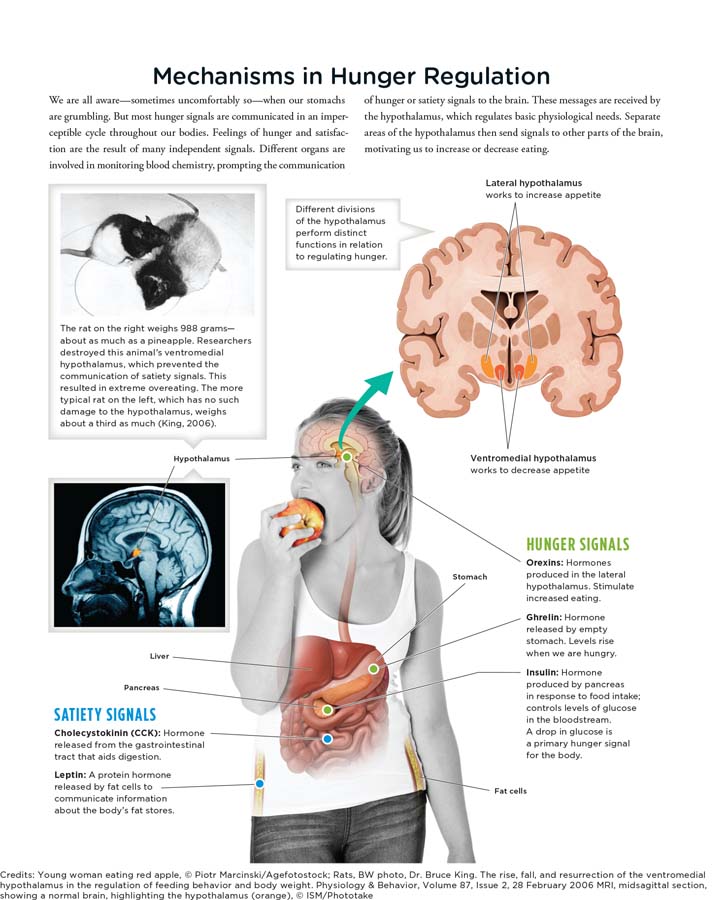Chapter 1. Chapter
Infographic
Scientific American: Psychology
Infographic Activity 9.2: Mechanisms in Hunger Regulation
Mechanisms in Hunger Regulation

We are all aware—sometimes uncomfortably so—when our stomachs are grumbling. But most hunger signals are communicated in an imperceptable cycle throughout our bodies. Feelings of hunger and satisfaction are the result of many independent signals. Different organs are involved in monitoring blood chemistry, prompting the communication of hunger or satiety signals to the brain. These messages are received by the hypothalamus, which regulates basic physiological needs. Separate areas of the hypothalamus then send signals to other parts of the brain, motivating us to increase or decrease eating.
Click the image to enlarge.
Click "Next" to continue.
1.1 Quiz
1. Barbara has developed a small tumor in a part of her brain, and as a result has experienced an ongoing increase in her appetite. This has caused her to gain weight, because even though her body does not need the calories she is eating her brain cannot stop stimulating her appetite. Which part of her brain is most likely affected by this tumor?
| A. |
| B. |
| C. |
| D. |